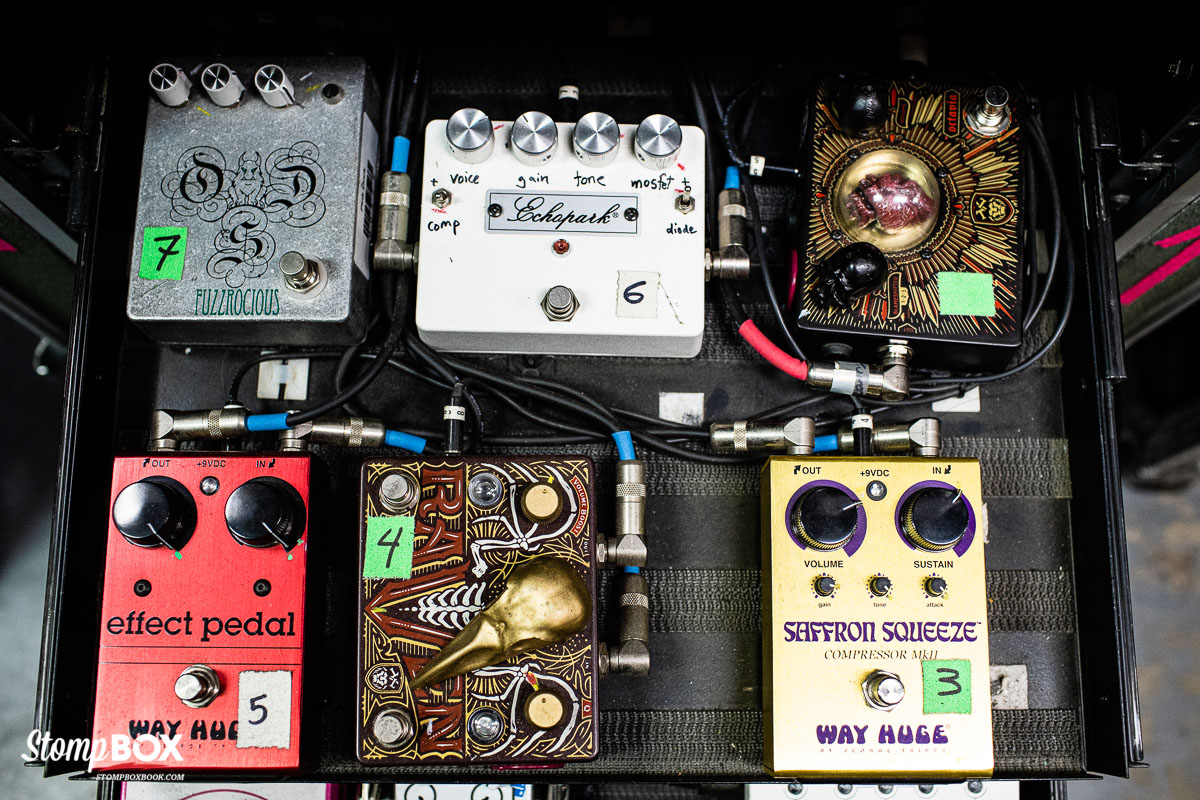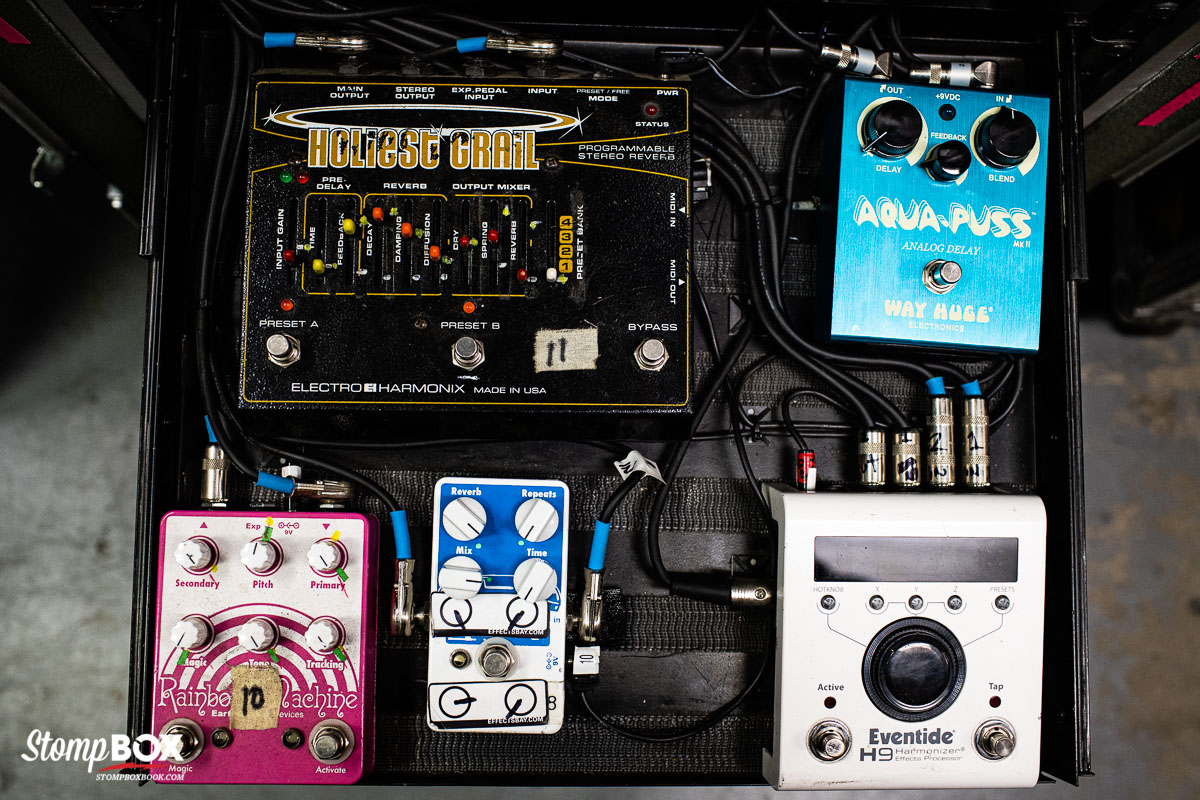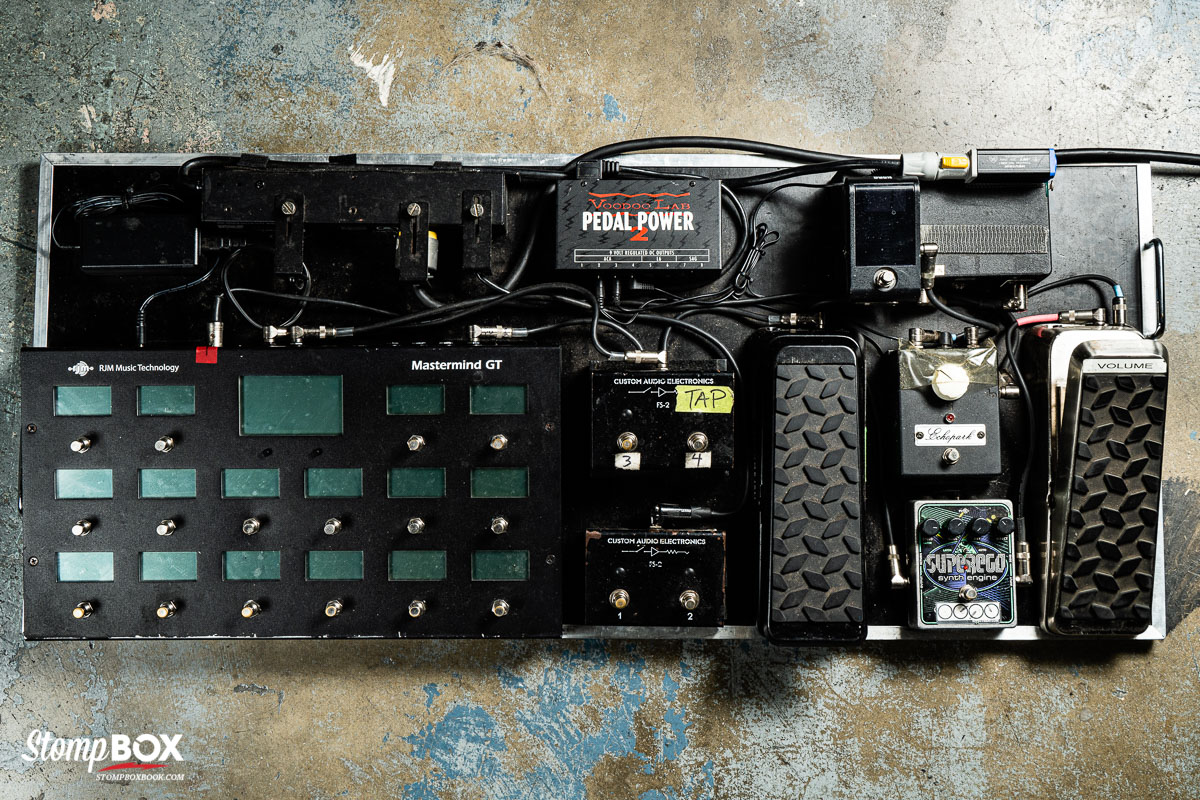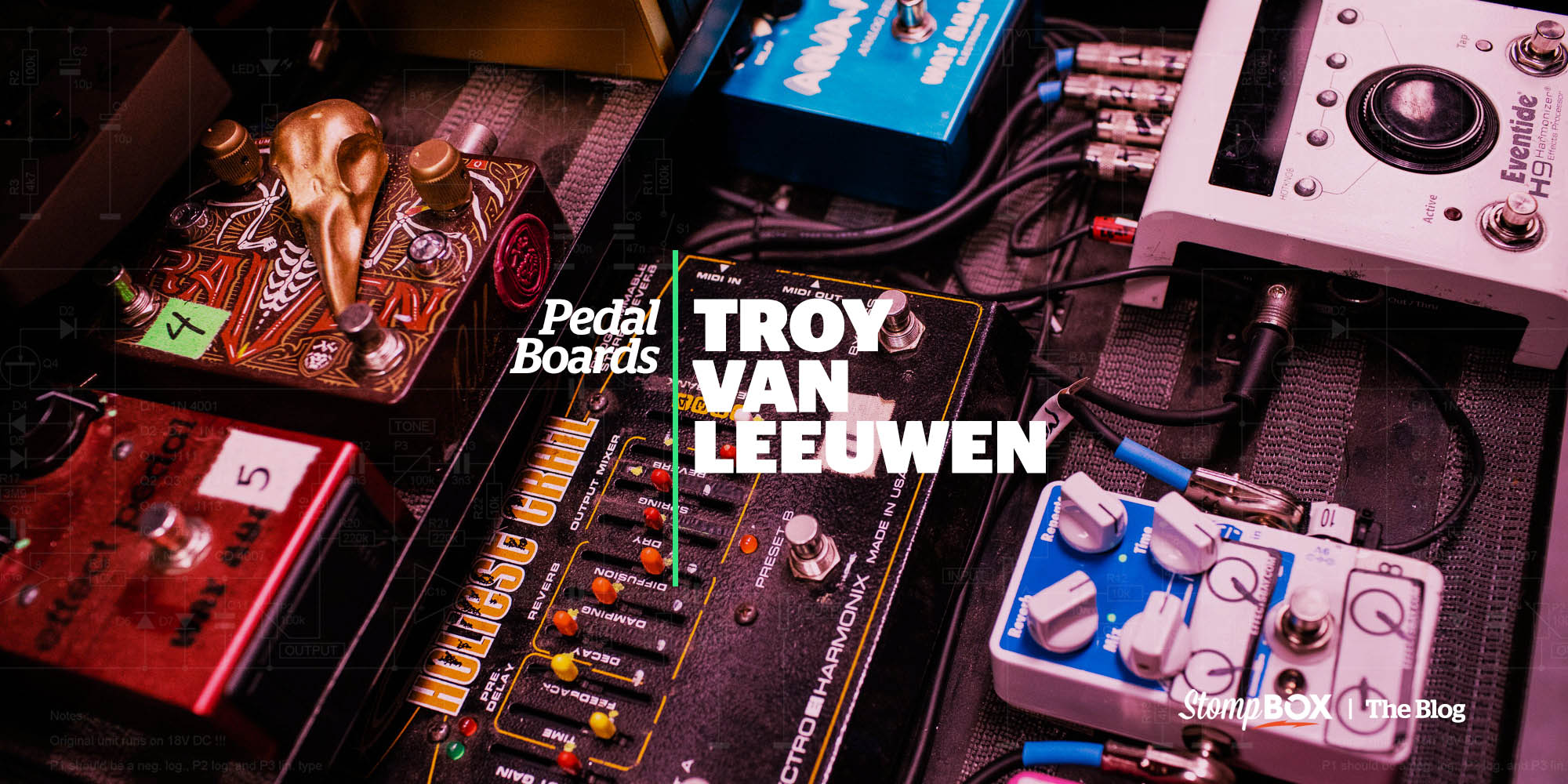Troy Van Leeuwen | Pedal Boards
As Troy Van Leeuwen admitted in our previous meeting, “I’d feel naked without a pedal board.” But while the innovative guitarist for Queens of the Stone Age is into cool, unique, exotic stomps, it’s crucial that they are roadworthy if they’re going to take one of the coveted spots on his board.
“I have a Maestro Bass Brassmaster, which is a fuzz pedal everyone’s been searching for forever,” he explains. “I don’t ever take that stuff on the road though. I would use it on records, but I’ve been able to get what I want out of other fuzz pedals. Malekko made a clone of it, which sounds really great too. It’s called the Barker B:Assmaster. I’d rather take that than take the original. Brassmaster on the road. I don’t want it to mess up. If it ever messes up, those things are expensive now.”
Fortunately the EHX Superego, which is such an important part of his musical voice, passes the sturdiness test, and is often found onstage trampled under Van Leeuwen’s foot. “I started using it in 2012 and had the same one through both the last two tours for … Like Clockwork, and the tour for Villains – and I am stepping on the momentary switch all the time. If I couldn’t rely on it I would have to find something else, but nothing else does what it does, so I keep buying backups.”
Stompbox recently visited with Van Leeuwen at QOTSA’s ultramega cool recording compound/headquarters Pink Duck, where he broke down the essentials on two current iterations of his ever-changing, lovingly over-engineered pedal boards.

“This board features some of my essential tools,” Van Leeuwen says, noting the presence of the rare Fuzzrocious housing of its “Oh See Demon” pedal. “I have the Echopark to boost all my Jazzmasters, he continues. “With all the cable I’m going through, I still need a boost, and the Echopark can add a clean 20 extra dbs to the signal. On the last tour, I literally just taped the setting down.”
There are also key offerings from Van Leeuwen’s close collaborators always on his board, like the omnipresent Way Huge. “I’m good friends with Jeorge [Tripps, Way Huge founder],” Van Leeuwen notes, adding he and Tripps often develop pedals together, with Tripps relying on Van Leeuwen’s ear in the prototyping.
Van Leeuwen also develops signature stomps with Dutch boutique maker Dr. No, repped here by two of his sculptural, raven-beaked creations. “He did two for me,” Van Leeuwen notes. “One is a filter pedal, which is basically a cocked wah with three switchable presets or ranges. It’s like a Rangemaster, but with selectable frequencies. We also designed an Octavia-type fuzz pedal together. If anything ever goes wrong with them, I just have him fix them.”

“These are more essential tools,” Van Leeuwen states, pointing out two, the very “eq-able” Electro-Harmonix Holiest Grail and the uber-pro, studio quality Eventide H9. “I always have reverb, of course, and modulation – and the Eventide H9 is all that, in perfect stompbox form,” he notes. “The Rainbow Machine basically serves as a doubler. I’m always switching between direct and wide, dry and wet.”

“A RJM mastermind GT Controller (which also serves as a convenient surface for Troy’s Electro-Harmonix Superego synth stomp), serves as the pedalboard’s nerve center – preserving the chain combinations Van Leeuwen uses night after night on stage.”
Full interview and photo of Troy’s chosen pedal will be featured in the Stompbox Book, coming summer 2020.
Get on our newsletter for book updates.
